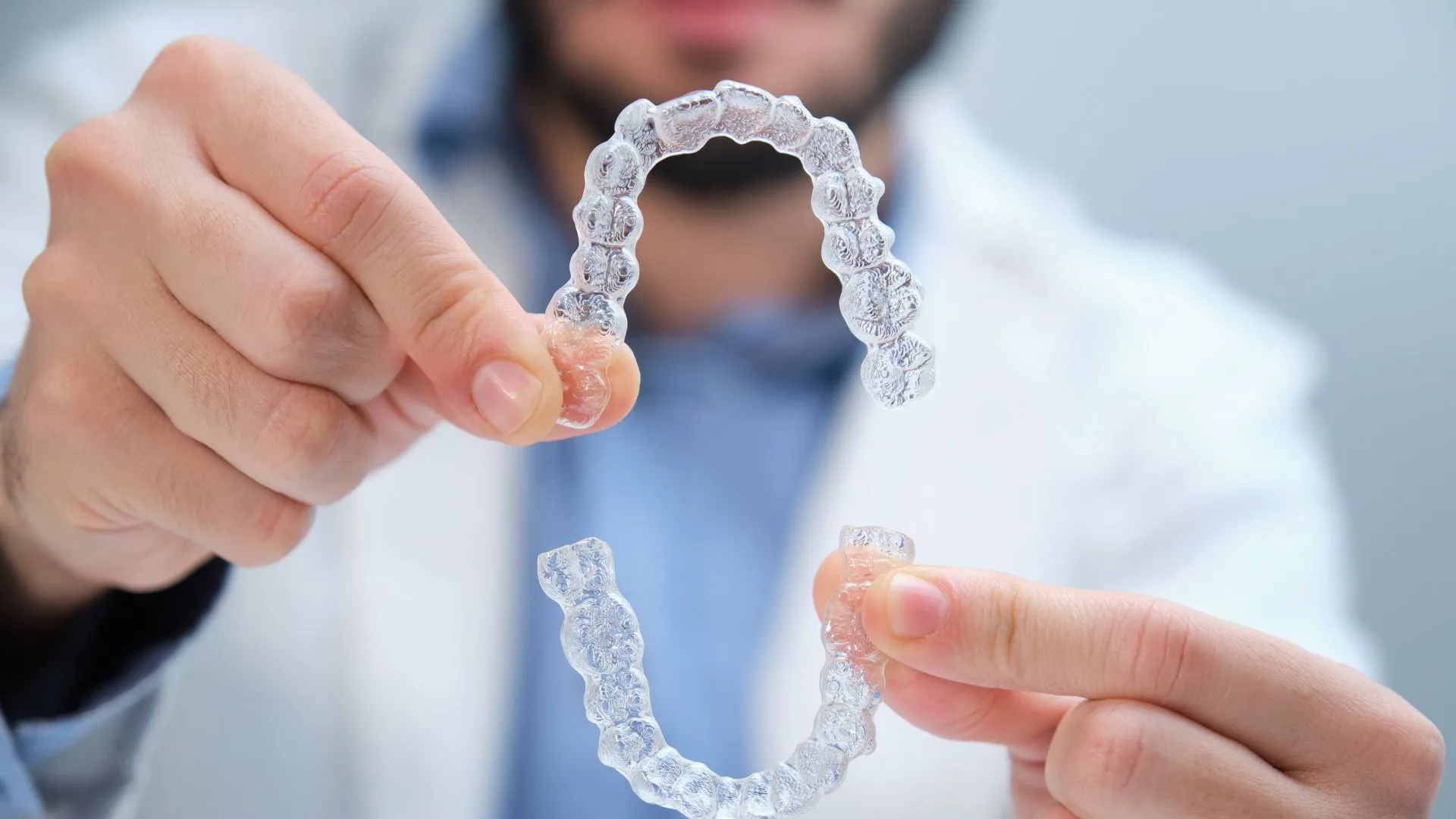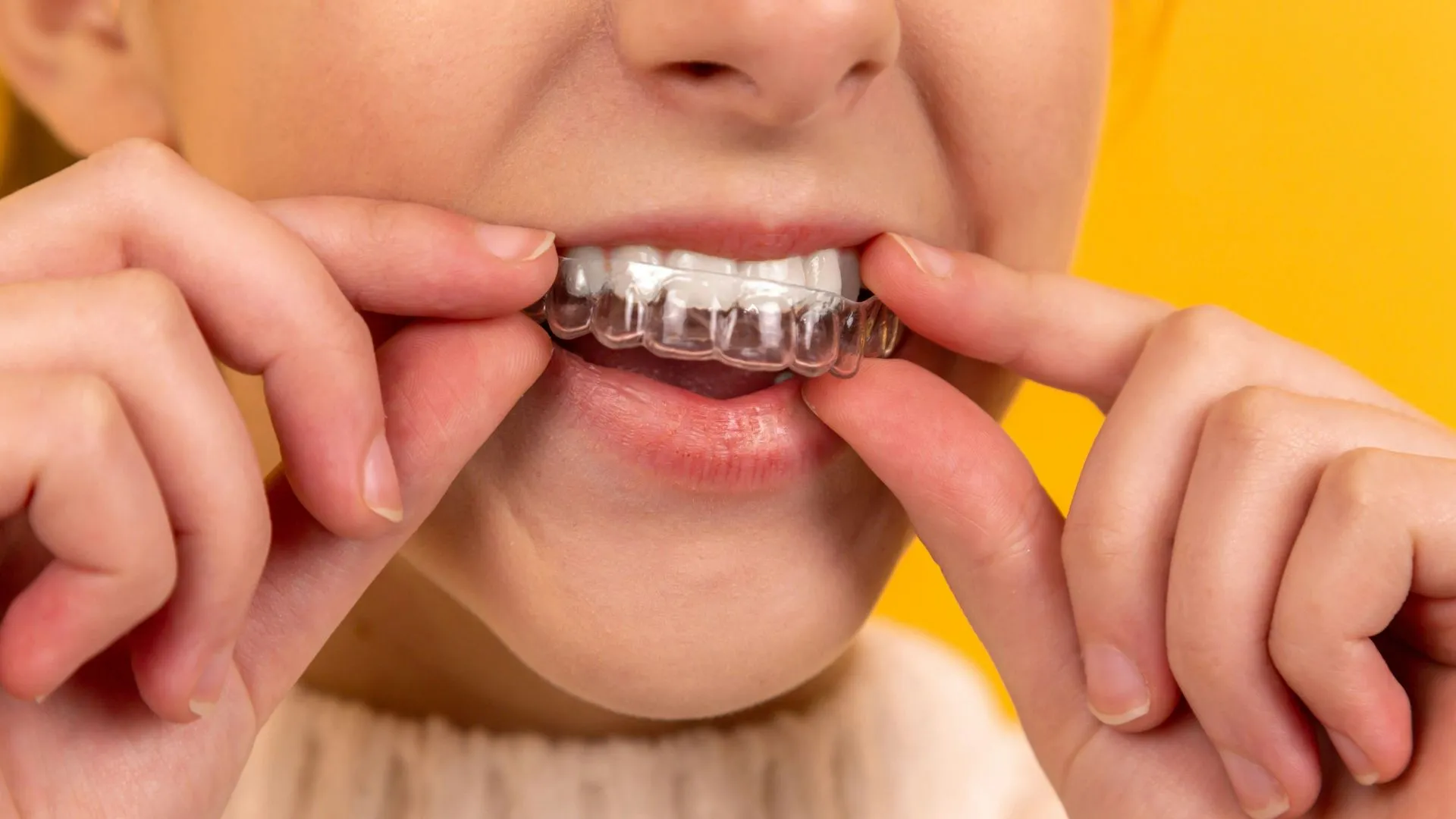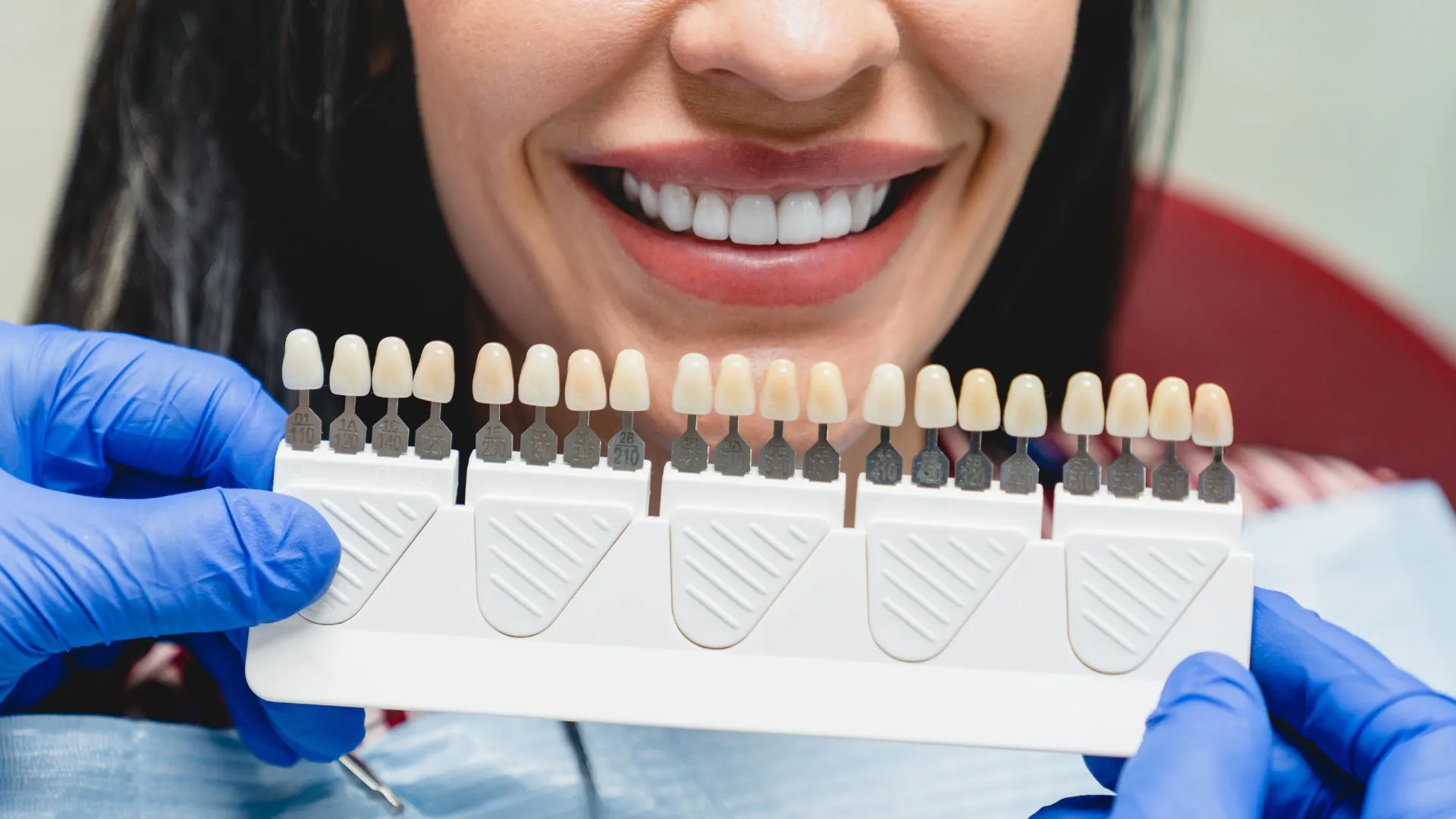Growing in popularity among dental health experts and their patients is a cosmetic dentistry product called Invisalign®. You might’ve seen it either on a TV commercial or perhaps your dentist even offered it to you as a tooth straightening option…
Growing in popularity among dental health experts and their patients is a cosmetic dentistry product called Invisalign®. You might’ve seen it either on a TV commercial or perhaps your dentist even offered it to you as a tooth straightening option alternative to traditional braces. Now, if you’re new to learning about Invisalign® and how it works, you might be unsure as to how effective it can be to straighten your teeth. You probably also want to know how Invisalign® compares to braces in terms of results, pricing, and patient satisfaction.
To learn more about how these two compare and if Invisalign® really works just the same as traditional braces, continue reading down below.

So when considering the basic differences between Invisalign® and braces, the most obvious difference to note is that Invisalign® retainers are clear and invisible. Traditional braces sport a wire wrapping around the patient’s teeth that is secured to them with brackets which help to straighten the teeth into alignment over time.
Invisalign’s clear retainers also work to shift your teeth into alignment over time but you don’t have to worry about wires pinching your cheeks, avoiding certain foods, or hiding your smile because you’re too embarrassed about your teeth.
Below, Szymanowski Orthodontics discusses more basic comparisons between the two teeth straightening options to give you an idea of how they differ and which might be the better option for you.
Braces vs. Invisalign®
Braces and Invisalign® are both designed to straighten teeth over time while improving your smile and oral health. Traditional braces have been around for a long time, and have a well-established history of treatment.
Invisalign® is a much newer treatment option, having only been widely used for the last fifteen years or so, but the system continues to increase in popularity. Traditional braces consist of metal brackets being attached to your teeth, tied together by wires and tiny rubber bands. Modern orthodontics means there are brackets available that more closely match your enamel color, or you can get them in different colors if you prefer making a fashion statement with your mouth! Invisalign®, on the other hand, is designed to be invisible.
The clear aligner trays are made of smooth plastic and worn over the teeth. We use x-rays, pictures, and impressions to create a precise 3-D image of your teeth which we then use to customize your aligners.
Read more…
Invisalign® retainers are designed and adjusted to offer similar results to braces but important that patients who want to get the best results from using their clear aligners wear them nearly all hours of the day. Another thing to consider is that Invisalign® is only an option for some patients depending on how much your teeth need to be shifted to reach proper alignment. Those with extreme cases of crowding, gaps, or other issues should still opt for traditional braces.
In the following article, Caven Dental provides further details about Invisalign®, its treatment timeline, and things to expect when using it.
Is Invisalign® as effective as standard braces?
Here are some more details about Invisalign®:
- It’s fast-working, generally taking six to 18 months for treatment.
- It’s a more expensive treatment option than braces.
- It’s more convenient, as Invisalign® is easy to maintain, can be removed before meals, and is absent of the wires that are synonymous with braces.
- There are no dietary requirements with Invisalign®, as it is removed during meals. Keep in mind that chewing gum, popcorn, and hard candies are often discouraged with those who wear braces.
- Like braces, Invisalign® may cause some discomfort due to tooth movement.
Finally, the last thing you’ll want to think about when comparing traditional braces to using Invisalign® is the cost of each treatment option. Both might seem fairly pricey when considering how long the treatment process is but how much do they differ in terms of price point? Let’s find out.
Down below, Colgate explores the cost of each option and emphasizes the importance of consulting with your dentist or orthodontist to get a better idea of how much straightening your teeth will cost you.
What do invisalign® braces cost? Are they worth it?
The typical price of Invisalign® braces is usually a bit higher than regular braces. The average cost, according to the manufacturer, is between $3,500 and $8,000. Your dentist or orthodontist can give you a better estimate of the price.
The factors that come into play are the extent of the alignment your teeth require and how many aligners you need throughout the treatment. The typical cost of regular braces varies widely but is usually in the range of $2,500 to $6,000. Again, the cost varies on a case-by-case basis, depending on your individual needs, and should be discussed with your dentist.
Most dental insurance plans cover Invisalign® just as they would regular braces, but check with the insurance company first to determine the extent of their coverage.
So, when considering the differences between Invisalign® treatment and braces, invisible aligners do provide effective results in being able to straighten your teeth however there are a number of factors to consider that might make braces a better option for you. Invisalign® retainers are more expensive in the long run when compared to braces.
They also still have to be worn for most of the day; so even though they’re invisible, it might be worth it to just wear braces anyway. However, the choice depends on the patient and if you’re considering teeth straightening options, you should first consult with your dentist to get a better idea of what option will work best for you.
Invisalign® is considered a form of cosmetic dental treatment that impacts mainly how your teeth look but improving the alignment of your teeth also can dramatically influence your dental health.



